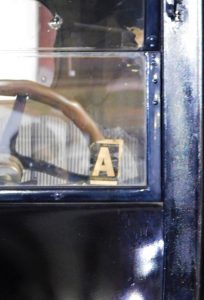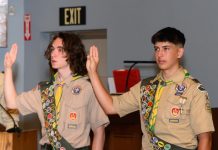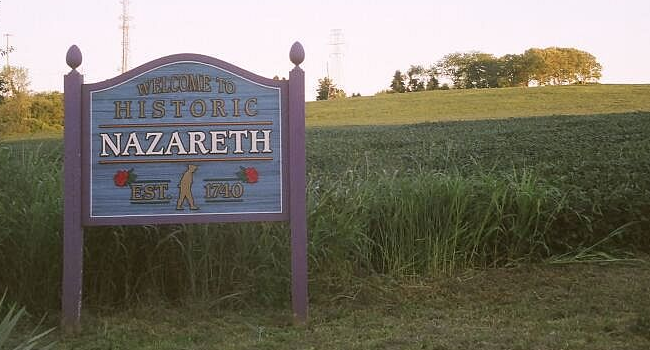In this fourth column, Larry Oberly and this writer are speaking to Mrs. Beatrice Christoff about her father’s World War II experiences in New Guinea and the Philippines. Her father, Mr. Herbert Ruch, a prolific writer, wrote more than 200 letters about his military journey.
In our previous column, we were with his engineering unit on the island of New Guinea in the South Pacific – the year, 1945.
Sgt. Ruch writes, “We are going to leave New Guinea sometime after July 2. We boarded the U.S.S. Barnstable, a class attack transport in service with the U.S. Navy from 1944 to 1946, bound for the Philippines.”
The Philippines had been liberated, the Japanese army was defeated and Gen. MacArthur and American armed forces returned to a war-damaged country.
“We arrived July 8. The trip only took four-and-a-half days. According to the ship’s newspaper, it was the fastest run it had made. Manila is no beautiful place; it is quite a wreck. The way people live is pitiful, but it is war. There is not much left of Manila. It must be rebuilt. There seems to be a very large population. The prices of things are very high as the people do not have money.
“The main food the natives eat – rice, three times a day. I saw the rice paddies. We have plenty of work. We need to set up lights after the tents are set up. I will not send pictures of New Guinea. I don’t want to remember it.
“The first announcement that Japan surrendered was given Aug. 10, but it turned out to be a rumor. On Aug. 15, the rumor was true. The war was over. We were waiting for V-J Day to celebrate Japan’s surrender. Manila celebrated. The place was wild.
“With the war over and the boys coming home, is there still gasoline/tire rationing? I wonder how things will be.”

Do our older readers recall gasoline rationing during World War II? Rationing was handled by the O.P.A., Office of Price Administration. To get a classification and rationing stamps, citizens appeared at the O.P.A. in person and swore they needed gas. If you had an excess of five tires, they were confiscated by the government.
Each driver was given a windshield sticker that proclaimed his classification. Gasoline rationing began Dec. 1, 1942, and ended Aug. 15, 1945 – A sticker: 4 gallons per week; B sticker: 8 gallons per week; C sticker: professional people, soldiers and armed forces going to duty; M: motorcycle drivers; T: truck drivers; X: special instances for high-mileage-type jobs.
Sgt. Ruch would soon get the answer in a letter from home, as censorship had ended.
“The great pleasure I had tonight was I could seal my envelope. We must work on Sundays, even though the war is over.”
The military now started to demobilize and bring servicemen and women home to their families and slowly convert the United States from a wartime to a peace economy.
In two weeks, we will be back home.









